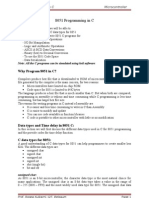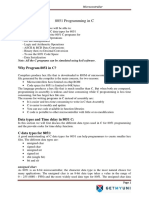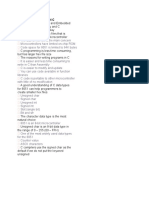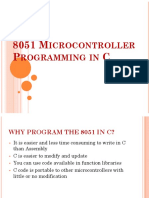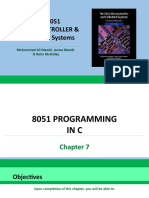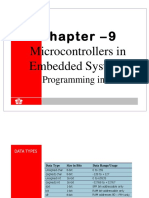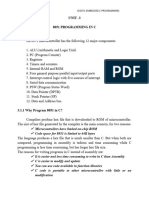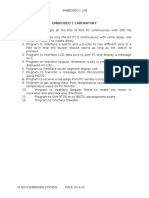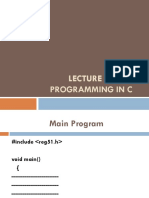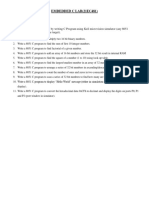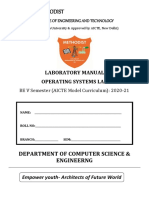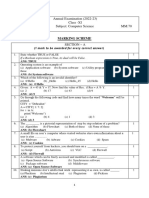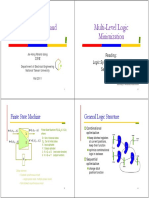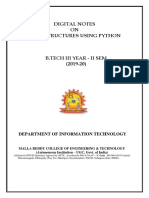0% found this document useful (0 votes)
21 views12 pagesModule 3c
The document discusses programming microcontrollers, specifically the 8051, using C language, emphasizing the importance of hex file size due to limited ROM. It covers data types suitable for the 8051, including unsigned char, signed char, unsigned int, and their applications in C programming. Additionally, it provides examples of C programs for various tasks, such as sending values to ports and creating time delays.
Uploaded by
Ms Sushma BCopyright
© © All Rights Reserved
We take content rights seriously. If you suspect this is your content, claim it here.
Available Formats
Download as PDF, TXT or read online on Scribd
0% found this document useful (0 votes)
21 views12 pagesModule 3c
The document discusses programming microcontrollers, specifically the 8051, using C language, emphasizing the importance of hex file size due to limited ROM. It covers data types suitable for the 8051, including unsigned char, signed char, unsigned int, and their applications in C programming. Additionally, it provides examples of C programs for various tasks, such as sending values to ports and creating time delays.
Uploaded by
Ms Sushma BCopyright
© © All Rights Reserved
We take content rights seriously. If you suspect this is your content, claim it here.
Available Formats
Download as PDF, TXT or read online on Scribd
/ 12


